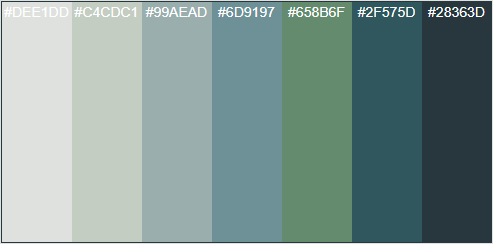Index Surge: Amplifying Your Insights
Stay updated with the latest trends and news across various industries.
Painting Your Pixels: A Colorful Journey to Website Aesthetics
Discover how to transform your website aesthetics with vibrant colors and creative designs. Start your colorful journey today!
Understanding Color Theory: The Basics of Website Aesthetics
Understanding color theory is essential for creating aesthetically pleasing websites that engage visitors and convey the intended message. At its core, color theory explores how colors interact, their emotional impact, and how they can be combined effectively. Utilizing the basics of website aesthetics involves understanding color schemes like complementary, analogous, and monochromatic palettes. For instance, a complementary color scheme uses colors from opposite sides of the color wheel, creating a vibrant look that can draw attention to key elements on a webpage.
In addition to color combinations, it's crucial to consider the psychological effects of different colors. For example, blue often conveys trust and professionalism, making it a popular choice for corporate websites, while yellow can evoke feelings of warmth and optimism, perfect for brands aiming for a friendly image. By applying these principles of color theory, web designers can create a cohesive and visually appealing site that aligns with the brand's values and goals. Remember, the right use of color not only enhances usability but also improves user experience, leading to higher engagement and conversion rates.

Choosing the Right Color Palette for Your Brand Identity
Choosing the right color palette for your brand identity is crucial, as colors evoke emotions and can influence consumer perception. When selecting a color scheme, consider the psychological effects of different colors. For instance, blue often conveys trust and reliability, while red can evoke excitement and urgency. Create a shortlist of colors that resonate with your brand's message and values, and then experiment with various combinations to find a harmonious balance that reflects your brand personality.
Once you have established a preliminary color palette, it’s essential to test it across various platforms and materials. Consider how your chosen colors will appear on digital screens, print materials, and merchandise. Additionally, ensure your color palette remains consistent across all branding elements to build recognition and familiarity. By taking the time to thoughtfully select and apply your color scheme, you enhance your overall brand identity and create a lasting impression on your audience.
How to Use Color Psychology to Enhance User Experience on Your Website
Color psychology plays a crucial role in shaping user experience on your website. Different colors evoke specific emotions and responses, influencing how visitors perceive your brand and interact with your content. For example, blue often conveys trust and dependability, making it an excellent choice for financial institutions and professional services. In contrast, red can evoke urgency and excitement, which is why it is commonly used in clearance sales and marketing promotions. By understanding the psychological effects of various colors, you can strategically select a color palette that aligns with your brand values and encourages positive user interactions.
To effectively implement color psychology in your web design, consider the following tips:
- Know Your Audience: Tailor your color choices based on your target demographic and their cultural associations with certain colors.
- Use Contrast Wisely: Ensure that text is readable by maintaining high contrast between the background and foreground colors.
- Stick to a Palette: Choose a limited color palette that reflects your brand identity to avoid overwhelming users.
By thoughtfully applying these principles, you can create a visually appealing website that not only engages visitors but also enhances their overall experience.